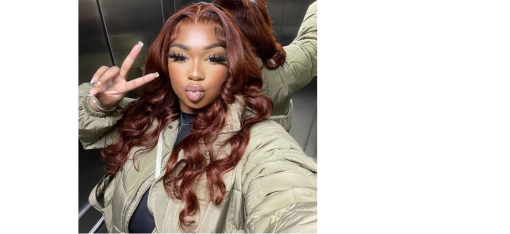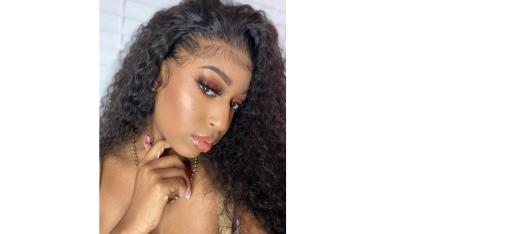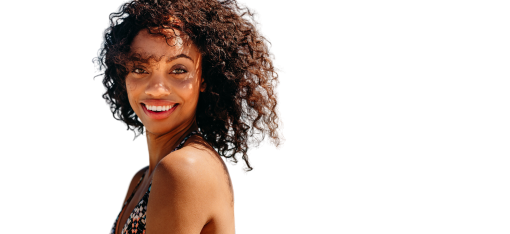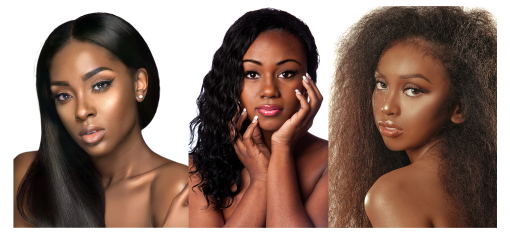Are Human Hair Wigs Ethical? Debunking Myths and Exploring Concerns (Pt. 2)
Welcome to Part 2 of our blog series on the ethics of human hair wigs! If you're just joining us, we highly recommend checking out our previous blog post where we tackled numerous important concerns surrounding this topic. We covered a range of issues and debunked common myths, providing valuable insights into the world of human hair wigs.

Now, let's continue our exploration as we delve deeper into the ethical considerations and concerns associated with these wigs. Don't miss out on the valuable information we've already shared – it's a must-read for anyone interested in understanding the ethical aspects of human hair wigs!
Ethical Concerns and Considerations
Labor Practices in the Human Hair IndustryThe human hair industry is not immune to ethical concerns, and one of the key aspects to consider is labor practices. It is important to ensure that the workers involved in the production of human hair wigs are treated fairly and have access to safe working conditions. In this section, we will explore fair trade practices, worker welfare, and the role of ethical certifications and organizations in promoting responsible labor practices.
- Fair Trade Practices and Worker Welfare
- Ethical Certifications and Organizations
Ethical certifications and partnerships are instrumental in promoting transparency and accountability in the human hair industry. Look for companies that hold certifications or are that prioritize ethical practices. These certifications ensure that the suppliers follow strict guidelines in terms of fair labor practices, worker welfare, and sustainable sourcing.
It's important to stay informed about the labor practices within the human hair industry and support brands that prioritize fair trade and worker welfare. By making conscious choices as consumers, we can contribute to a more ethical and sustainable industry that values the rights and well-being of workers involved in the production of human hair wigs.
Cultural and Religious Sensitivities
In a diverse and interconnected world, it is essential to acknowledge and respect the cultural and religious backgrounds of individuals when discussing human hair wigs. Let's explore the importance of embracing diversity and promoting dialogue and understanding in this section.
-
Respecting Different Cultural and Religious Backgrounds
Human hair has deep cultural and religious significance in various communities worldwide. It is intertwined with traditions, rituals, and ceremonies that carry profound meaning and symbolism. Understanding and respecting these cultural and religious backgrounds is of utmost importance when considering the production and use of human hair wigs. Let's delve deeper into why this respect is crucial and how it can be upheld.
Cultural Practices, Rituals, and Ceremonies
In different cultures, human hair is often associated with specific cultural practices, rituals, and ceremonies. These practices can include hair offerings, ancestral tributes, and rites of passage. Human hair holds immense value as it represents identity, heritage, and connections to ancestors. It is essential to recognize and honor these traditions to ensure that the production and use of human hair wigs do not infringe upon the cultural sanctity attached to human hair.
Preserving Cultural Authenticity
Cultural authenticity is an essential aspect of respecting different cultural and religious backgrounds. It involves acknowledging the historical and social context in which human hair is used and understanding its significance within specific communities. By preserving cultural authenticity, we can prevent cultural appropriation or commodification of human hair, which can be deeply offensive and disrespectful.
Engaging in Inclusive Practices
To respect different cultural and religious backgrounds, it is crucial to engage in inclusive practices throughout the human hair wig industry. This includes involving representatives from diverse communities in decision-making processes, seeking their input, and valuing their perspectives. By actively involving and collaborating with cultural experts and community members, we can ensure that the production and use of human hair wigs are aligned with cultural values and norms.
Education and Awareness
Education and awareness play a vital role in fostering respect for different cultural and religious backgrounds. It is important for manufacturers, retailers, and consumers to educate themselves about the cultural significance of human hair and the specific practices associated with its use. By increasing awareness, we can avoid unintentional cultural insensitivity and promote a more inclusive and respectful industry.
Collaboration and Partnerships
Building respectful collaborations and partnerships with cultural and religious organizations can also help uphold the importance of respecting different backgrounds. By working closely with these organizations, the human hair wig industry can gain valuable insights, guidance, and support to ensure ethical practices and cultural sensitivity in every aspect of the business.
We at lengths By Rihze' Qire' believe that by respecting different cultural and religious backgrounds, we can create an industry that appreciates the profound meaning and symbolism of human hair. Through understanding, empathy, and collaboration, we can navigate the complexities of cultural diversity and foster an environment of inclusivity. In the next section, we will explore the environmental impact of human hair wigs and the importance of sustainable practices in the industry.
-
Promoting Dialogue and Understanding
In the context of cultural and religious sensitivities surrounding human hair wigs, promoting dialogue and understanding is crucial. It allows for open conversations that bridge the gap between different perspectives, fostering mutual respect and creating a platform for learning and growth. Let's explore why promoting dialogue and understanding is key to navigating these complexities.
Bridging the Gap
Cultural and religious sensitivities can vary significantly from one community to another. What may be considered acceptable in one culture could be seen as inappropriate or offensive in another. By promoting dialogue, we create an opportunity to bridge the gap between these different perspectives. It allows individuals from diverse backgrounds to share their experiences, beliefs, and concerns openly. Through respectful communication, we can gain a deeper understanding of the cultural and religious sensitivities surrounding human hair wigs.
Enhancing Cultural Competence
Engaging in dialogue enables us to enhance our cultural competence. It involves developing knowledge, awareness, and sensitivity towards different cultural and religious practices. By actively listening and seeking to understand the perspectives of others, we can expand our own cultural horizons and avoid inadvertently causing offense. Cultural competence allows us to navigate the human hair wig industry with respect and empathy towards diverse communities.
Addressing Misunderstandings
Dialogue provides an opportunity to address misunderstandings and misconceptions. It allows us to clarify any misconceptions or misinterpretations that may exist regarding the cultural or religious significance of human hair. By openly discussing these topics, we can correct misinformation, challenge stereotypes, and promote accurate understanding. This helps to create a more inclusive and informed environment within the human hair wig industry.
Encouraging Collaboration
Promoting dialogue and understanding also encourages collaboration among different stakeholders within the industry. This includes manufacturers, retailers, consumers, cultural experts, and religious organizations. By coming together and engaging in meaningful conversations, we can work towards finding common ground, developing shared values, and fostering ethical practices that respect cultural and religious sensitivities. Collaboration enables us to create a more inclusive and responsible human hair wig industry.
Educating the Public
Dialogue plays a vital role in educating the public about the cultural and religious sensitivities associated with human hair wigs. By openly discussing these topics through various channels such as social media, blogs, and community events, we can raise awareness and promote understanding among a broader audience. Education helps to dispel stereotypes, challenge biases, and create a more empathetic society that respects the cultural diversity surrounding human hair wigs.
By promoting dialogue and understanding, we can navigate the complexities of cultural and religious sensitivities in the human hair wig industry. It allows us to learn from one another, address misunderstandings, and work collaboratively towards a more inclusive and respectful environment. In the next section, we will delve into the environmental impact of human hair wigs and explore the importance of sustainable practices in the industry.
Environmental Impact
- Eco-Friendly Manufacturing Processes and Materials
In the pursuit of reducing the environmental impact of the human hair wig industry, it is crucial to explore eco-friendly manufacturing processes and materials that align with sustainable practices. By prioritizing these initiatives, companies can contribute to a greener future and minimize their carbon footprint.
Eco-friendly manufacturing processes focus on minimizing waste generation, conserving energy, and utilizing sustainable technologies. Responsible wig manufacturers are increasingly adopting such practices to minimize their environmental impact. For example, some companies have implemented water recycling systems to reduce water consumption during the manufacturing process. Additionally, they invest in energy-efficient machinery and utilize renewable energy sources to power their operations, thereby reducing greenhouse gas emissions.
When it comes to materials, sustainable choices are also gaining traction in the wig industry. While human hair wigs remain popular, certain manufacturers are exploring alternative options that are more environmentally friendly.
In the context of environmentally conscious practices, it is worth noting the efforts made by Lengths By Rihze' Qire'. We understand the importance of considering the environmental impact of the human hair industry and are committed to implementing eco-friendly manufacturing processes and minimizing our ecological footprint. By prioritizing environmental consciousness, we aim to provide our customers with high-quality human hair wigs that align with their sustainability values.
Our AIM: Eco-Friendly Manufacturing Processes and Materials
We believe in adopting eco-friendly manufacturing processes that contribute to a greener future. Our commitment to sustainability begins at the production stage, where we implement measures to reduce waste generation and conserve energy. By utilizing advanced technologies and machinery, we strive to minimize our carbon footprint and enhance overall operational efficiency.
Moreover, we are dedicated to using materials that are environmentally responsible. Our human hair wigs are crafted from 100% ethically sourced human hair, ensuring the highest quality while minimizing environmental impact. We prioritize chemical-free and unprocessed hair, which helps preserve its natural state and health. By avoiding harsh chemicals and excessive treatments, we promote healthier and more sustainable hair products.
- Sustainable Options in the Wig Industry
As environmental consciousness continues to grow, sustainable options in the wig industry are becoming more prevalent. These options offer consumers the opportunity to make choices that align with their eco-friendly values without compromising on style or quality.
While not as sustainable as human hair wigs, synthetic is an alternative. Its fibers derived from recycled materials. Synthetic wigs made from recycled plastic bottles or other post-consumer waste reduce the demand for virgin resources and divert plastic waste from landfills.
Another emerging trend in the wig industry is the use of plant-based or vegan wigs. These wigs are crafted from fibers derived from natural plant sources such as corn, soy, or bamboo.
In addition, innovative technologies such as 3D printing are being explored by some companies to create human hair wigs with minimal waste. The precise measurements and efficient use of materials in the 3D printing process help reduce material waste and promote a more sustainable production method.
Our AIM: Sustainable Practices in the Wig Industry
As a forward-thinking company, we recognize the importance of incorporating sustainable practices in the wig industry. While our focus is on providing high-quality human hair wigs, we actively seek ways to minimize our environmental impact.
One of our initiatives is to promote recycling and reusing. We encourage our customers to take care of their human hair wigs so that they can be used for an extended period. Proper maintenance and styling techniques can help prolong the lifespan of the wigs, reducing the need for frequent replacements.
Furthermore, we work closely with our suppliers to ensure ethical and sustainable sourcing practices. By partnering with suppliers who prioritize fair labor practices and sustainable approaches, we contribute to a more responsible and environmentally conscious human hair industry.
By offering eco-friendly manufacturing processes and promoting sustainable practices, we aim to provide our customers with human hair wigs that not only enhance their beauty but also align with their environmental values. Together, we can make a positive impact on the planet while enjoying the versatility and elegance of human hair wigs.
Responsible Alternatives and Consumer Choices
Synthetic Hair Wigs: An Ethical Alternative?
- Comparing Synthetic Hair Wigs and Human Hair Wigs
When it comes to choosing a wig, synthetic hair wigs are often considered as an alternative to human hair wigs. While both options have their own unique features, it's important to understand the differences between them.
Synthetic hair wigs are made from artificial fibers, typically composed of materials such as polyester, acrylic, or polyvinyl chloride (PVC). These fibers are designed to mimic the appearance and texture of natural hair. On the other hand, human hair wigs are crafted from 100% real human hair, providing a more natural and realistic look.
- Pros and Cons of Synthetic Hair Wigs from an Ethical Standpoint
Pros:
- Affordability: Synthetic hair wigs are generally more affordable compared to human hair wigs, making them a budget-friendly option.
- Low Maintenance: Synthetic hair wigs require minimal styling and maintenance. They retain their style even after washing, which can save time and effort for individuals who prefer a hassle-free wig experience.
- Color and Style Options: Synthetic hair wigs offer a wide range of colors and styles, including vibrant and fantasy shades that may be difficult to achieve with human hair wigs.
Cons:
- Durability: Synthetic hair wigs have a shorter lifespan compared to human hair wigs. The synthetic fibers are more prone to tangling, frizzing, and heat damage, which can affect the overall longevity of the wig.
- Heat Sensitivity: Synthetic hair wigs are not heat-resistant and cannot be styled with heated styling tools such as curling irons or straighteners. Excessive heat can cause the fibers to melt or become permanently damaged.
- Limited Versatility: Synthetic hair wigs have less versatility in terms of styling options. The pre-set style cannot be easily changed or restyled, limiting the wearer's ability to personalize the look.
From an ethical standpoint, synthetic hair wigs offer certain advantages. However, it's important to note that synthetic hair wigs are not as sustainable as human hair wigs.
Supporting Ethical Brands and Initiatives
1. Encouraging Ethical Consumer Choices
As individuals, we have the power to make a positive impact through our purchasing decisions. By consciously choosing human hair wigs from ethical-conscious brands, we contribute to a more responsible industry.
Additionally, educating ourselves about the ethical considerations involved in the wig industry can empower us to make informed choices. In conclusion, synthetic hair wigs can serve as an ethical alternative to human hair wigs, offering affordability and low maintenance. However, they come with certain limitations in terms of durability and styling versatility. It is important to consider the pros and cons while keeping ethical considerations in mind.
Conclusion
Recap of Key Points Discussed
Throughout this blog, we have explored the ethics of human hair wigs, debunked common myths, and delved into various considerations surrounding their production and use. Let's recap the key points we have discussed:
Understanding Human Hair Wigs: We discussed the definition, types, and reasons behind choosing human hair wigs, including Lengths By Rihze' Qire's ethical sourcing practices.
Common Myths About Human Hair Wigs: We dispelled the misconception that all human hair wigs come from unethical sources, highlighting responsible sourcing by reputable manufacturers.
Ethical Concerns and Considerations: We focused on labor practices, fair trade, and worker welfare.
Cultural and Religious Sensitivities: We emphasized the need to respect diverse backgrounds and foster dialogue and understanding.
Environmental Impact: We discussed eco-friendly manufacturing processes, sustainable materials, and Lengths By Rihze' Qire's chemical-free and unprocessed human hair.
Responsible Alternatives and Consumer Choices: We compared synthetic and human hair wigs, emphasizing supporting transparent brands and making ethical consumer choices.
Final Thoughts on the Ethics of Human Hair Wigs

The ethics of human hair wigs are a complex and nuanced subject. While there have been instances of unethical practices in the industry, it is crucial to recognize that responsible brands prioritize fair labor practices, worker welfare, sustainability, and transparency.
As consumers, we have the power to make ethical choices by supporting brands that align with our values. By opting for human hair wigs from ethical sources or exploring sustainable alternatives, we contribute to a more responsible and compassionate industry.
Remember, the key is to be informed, ask questions, and promote dialogue and understanding. Together, we can create a positive impact and ensure that beauty and ethics go hand in hand.
Thank you for joining us on this journey to explore the ethics of human hair wigs. We hope this blog has provided valuable insights and empowered you to make conscious and ethical choices in your wig purchases.












Leave a comment